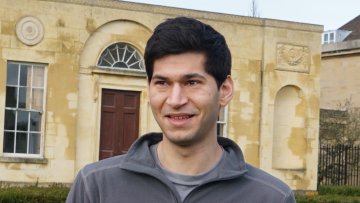12:00
Conformal Geometry of Null Infinity, including gravitational waves
Abstract
Since the seminal work of Penrose, it has been understood that conformal compactifications (or "asymptotic simplicity") is the geometrical framework underlying Bondi-Sachs' description of asymptotically flat space-times as an asymptotic expansion. From this point of view the asymptotic boundary, a.k.a "null-infinity", naturally is a conformal null (i.e degenerate) manifold. In particular, "Weyl rescaling" of null-infinity should be understood as gauge transformations. As far as gravitational waves are concerned, it has been well advertised by Ashtekar that if one works with a fixed representative for the conformal metric, gravitational radiations can be neatly parametrized as a choice of "equivalence class of metric-compatible connections". This nice intrinsic description however amounts to working in a fixed gauge and, what is more, the presence of equivalence class tend to make this point of view tedious to work with.
I will review these well-known facts and show how modern methods in conformal geometry (namely tractor calculus) can be adapted to the degenerate conformal geometry of null-infinity to encode the presence of gravitational waves in a completely geometrical (gauge invariant) way: Ashtekar's (equivalence class of) connections are proved to be in 1-1 correspondence with choices of (genuine) tractor connection, gravitational radiation is invariantly described by the tractor curvature and the degeneracy of gravity vacua correspond to the degeneracy of flat tractor connections. The whole construction is fully geometrical and manifestly conformally invariant.
A set of integers greater than 1 is primitive if no number in the set divides another. Erdős proved in 1935 that the series of $1/(n \log n)$ for $n$ running over a primitive set A is universally bounded over all choices of A. In 1988 he conjectured that the universal bound is attained for the set of prime numbers. In this research case study, Oxford's Jared Duker Lichtman describes recent progress towards this problem:
Alongside the mathematics, the Andrew Wiles Building, home to Oxford Mathematics, has always been a venue for art, whether on canvas, sculpture, photography or even embedded in the maths itself.
However, lockdown has proved especially challenging for the creative arts with venues shut. Many have turned to online exhibitions and we felt that not only should we do the same but by so doing we could stress the connection between art and science and how both are descriptions of our world.
Years of IceCube Data -- Comparison with the Solar Cycle and Magnetic Field
Models
Oxford Mathematician Andrea Mondino has been awarded a Whitehead Prize by the London Mathematical Society (LMS) in recognition of his contributions to geometric analysis in differential and metric settings and in particular for his central part in the development of the theory of metric measure spaces with Ricci curvature lower bounds.





